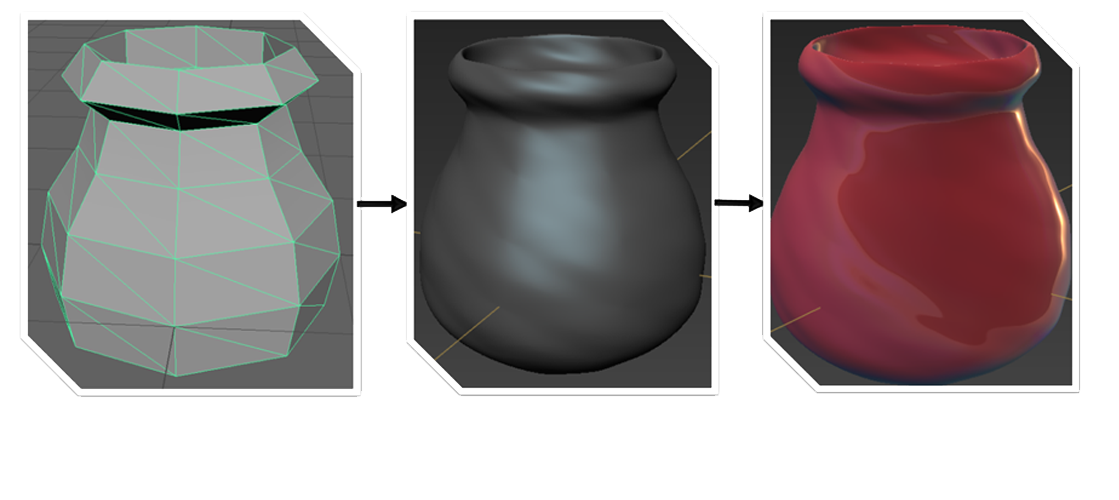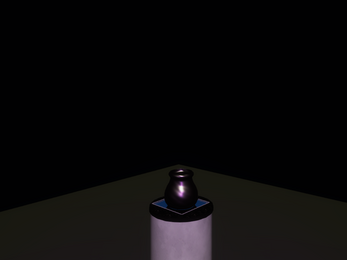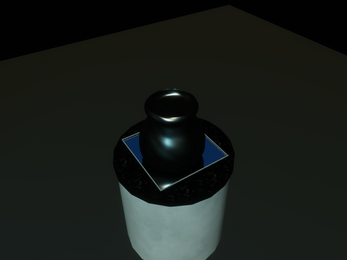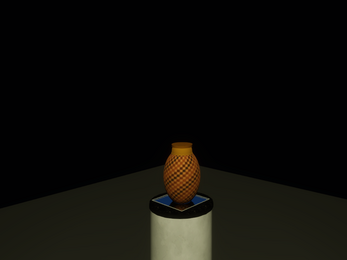
Accessible Art
A downloadable Graphics Demo for Windows
Introduction
Project Goals -
- To leverage computer graphics tools and techniques to realistically present classical and traditional artwork to an audience who do not have access to a museum.
- Aid in preservation of tangible history in a virtual form.
- Instill an appreciation for traditional and classical artwork.
Method
Program Goals-
- Create a vertical slice of a project that, in theory, is infinitely expandable IF the core elements are done correctly.
- These core elements being form, material, texture, and lighting being presented accurately.
- With the current advancements in computer graphics, especially when leveraging AR/VR, a photo-realistic model can easily cross the “uncanny valley.”
Form –
- Arguably the most important element of an art piece is its form. Recreation of an art piece as a computer model MUST be accurate.
- One could hand sculpt (in a program like Mudbox), geometrically manipulate (in Autodesk Maya), or 3D scan (using programs such as display.land.)
Material -
- The importance of accurately recreating the material a piece was made of cannot be understated. For the example below, I leveraged Autodesk Mudbox to simulate clay.
- Mudbox allowed me to take low polygon models (created in Autodesk Maya) and up the polygon count. Furthermore, I could apply custom materials, textures, and effects to a piece depending on what is required.

Texture –
- The texture of a piece is incredibly important. In additional to other tools, I heavily rely on normal maps for fast yet realistic processing.
- A normal map is an image that stores each pixels of an image’s normal (perpendicular to the surface). The r,g,b channels of the images are used to control each pixels normal. A normal map allows me to very inexpensively create high resolution details (depth) with a low-resolution model. As a normal map is 2D, very little processing is needed as it is used to “fake” lighting in each “bump.”
- This means I do not add additional expensive polygons to the model, greatly minimizing potential load on the CPU (or GPU if I am using GPU instancing).

Lighting -
- To calculated Lambertian (aka Diffuse) lighting of a surface, the unit vector from the shading point to the light source is dotted with the unit vector normal to that surface which results in the intensity of the light on said surface.
- Each installation will have different lights depending on the piece. To account for this, I allow the user of the program to chose any colored light from a color wheel.
- When the user clicks, the x,y position of the mouse is correlated to the identical pixel location of a color wheel image.
- At that pixel value, I read the r,g,b value and apply that hex value to a spotlight on the piece.
- This allows the user to select any color desired.
Results
- Below are three separate vases inspired by art of the Southwest. Each piece utilizes different tools, techniques, and processes.
- Furthermore, each vase is presented on a simple base with a mirror. This mirror is a planar reflection probe reflecting back every frame (which allows a reflection to be relative to a user's location). This is displayed using another camera with the viewing plane being projected onto a 2D plane.

Conclusion
Success
- This program satisfies its initial goal; it is a vertical slice of a project that could be infinitely expandable.
- Furthermore, capturing of accurate form, material, texture and lighting is possible and has been achieved.
Issues
- One must recognize the inherit issues with this project.
- Need permission from artists.
- The program essentially undercuts museums so permission from museums would be difficult.
- Even leveraging emerging graphics techniques, the program is graphically expensive. The programs resolution can be scaled down easily, however, this would then fail to convince users, rendering the program moot.
Future Hope
- As graphics techniques are improved, this project will likewise improve, and the minimum hardware specifications will lessen.
- The coming generation is increasingly an “online” generation and programs like this should gain popularity as museum's popularity lessen.
- 3D scanning techniques are improving rapidly, refining the accuracy of each virtual model.
| Status | Prototype |
| Category | Other |
| Platforms | Windows |
| Author | Matthew Briggs |
| Tags | Unity |
Download
Download
Accessible Art Zip 135 MB
Install instructions
Just unzip and open the .exe!





Leave a comment
Log in with itch.io to leave a comment.